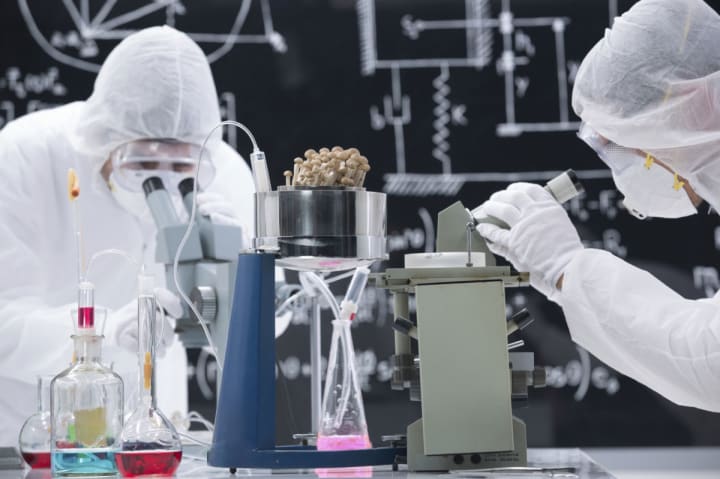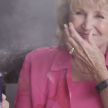British author Simon G. Powell is well known for his time spent studying psilocybin and its relationship with human society. Powell documented the history of mushrooms for an article in Weed World Magazine.
As many of us know, so generous is Mother Nature’s bosom that magic mushrooms grow all over the British landscape in the wet autumn months. Knowing that they are legal when unprocessed, a hardworking man armed with little more than a bag and a keen eye can pick hundreds of fresh specimens in a single afternoon. And yet despite the mushroom's widespread presence throughout most parts of Northern Europe, there are no historical records of it having been used in the past—at least not deliberately. As for accidental ingestion, we have notes surrounding a single historical incident. In November 1799, a man named Everand Brande reported to a well known doctor's journal, informing them of the unfortunate case of a poor London man who had gathered some mushrooms from a local park. He had taken them home to be eaten by his family for breakfast. This proved to be a rather regrettable culinary decision for, after consuming the mushrooms, the whole family fell ill. Brande had subsequently been called to the scene to administer medical aid.
Judging from Brande's description of the symptoms that he observed in the sickened family—dilated pupils, stupor, restlessness, fits of immoderate laughter, etc.—and from analyzing the detailed description and drawings of the mushrooms involved, it is clear that Psilocybe semilanceata—now known as liberty caps—was the culprit. This is the most common psilocybin-bearing species of fungus found in Northern Europe.
In cases of unprepared intoxication, it comes as no surprise that the father of the unfortunate family was “...attacked with vertigo and complained that everything appeared black..." and had a “...firm persuasion that he was dying." Strangely, the man insisted that his family had consumed these same mushrooms regularly, although it is possible that he had previously obtained a similar-looking inactive species.

Photo via International Business Times
Back and Better Than Ever
After this brief appearance, the magic mushroom walked off stage and did not appear again for many, many years. When it did return, it would be with much more audience participation. In 1969, the year in which men landed on the moon, a paper about British psilocybin mushrooms appeared in a rather obscure mycology journal (mycology is the study of fungi). Air-dried liberty caps had been collected from Hertfordshire and were tested for the presence of psilocybin. After lengthy tests, a profound and markedly guarded conclusion was reached:
“Thus this conclusively identifies the presence of psilocybin for the first time in the sporophores of P. semilanceata and is also the first record of the natural occurrence of this substance in this country. Further, on the basis of the effective hallucinogenic dose for pure psilocybin, ingestion of more than about three grams of air-dry sporophores of Psilocybe semilanceata might be expected to be hallucinogenic.”
Well, say no more. There was no way that this kind of loaded information could stay at the back of the scientific establishment's filing cabinet. Sure enough, within the next decade, use of the mushroom began to expand across the land. In April 1976, the same year that the Sex Pistols began spearheading an all-out snarling anarchic assault upon the music industry, magic mushrooms hit the headlines. The Times newspaper reported that a Reading man had been found not guilty of possessing psilocin (the lesser known hallucinogenic substance contained within the mushroom), although he had been caught in possession of psilocybin mushrooms. At this time psilocin was listed as a Class A drug along with heroin, yet its presence in a lowly mushroom posed a legal dilemma. The mushroom was a natural, unprocessed part of the British landscape. In any case the man was acquitted, the fresh mushroom being deemed legal.
At the close of 1977, TheTimes reported another case of acquittal for possession of psilocybin mushrooms. The judge had thought it absurd to prosecute when the mushroom could be found growing in Hyde Park. Pure processed psilocybin out of a lab was one thing, while fresh mushrooms out of the ground was another. If they made the fresh mushroom illegal, they would have to shut down Hyde Park. What would they tell the tourists?

Photo via UK Rock Festival
Proceed with Caution, My Friends
The year 1978 saw the British Journal of Psychiatry focus its analytical eye upon psilocybin. Clinicians were notified that they were likely to meet with a growing number of "bad trip" cases due to "magic mushroom" ingestion. The journal report tells of three persons presenting themselves to psychiatric clinics in Manchester due to transient psychosis. The worst case concerned a stupid twenty-year-old male who had to be hospitalized for ten days because of schizophrenia-like symptoms after having taken regular doses of mushrooms several times within the span of a week—at the same time depriving himself of sleep and food. The other two cases suffered only minor psychological problems. An inquiry revealed that psilocybin use was widespread amongst Manchester's hippy subculture, who reported that 30-40 liberty caps was the dose required to obtain the full spectrum of hallucinogenic effects.
By the early 1980s the trend for mushroom use had gained momentum, particularly in Wales. Throughout September 1981 TheTimes reported sporadic bursts of hippy activity in and around the Welsh town of Aberystwyth, where a major "magic mushroom festival" was planned. Sadly for the flared hippy contingent, a lack of rain meant that the mushrooms failed to show.
August 1982 saw TheTimes print a scare story about the mushrooms, quoting a Dr. Harries (whose surname means to worry or harass) of Cardiff University Hospital who protested that: “The present legal position is absurd. The mushrooms can cause convulsions and even death if eaten in quantity.”
Baneful assertions like these serve to scare people away from a type of experience ill-understood by science. Such an outright condemnation when viewed against psilocybin's notable history as a sacred shamanic sacrament in Mexico, emerges as a hysterical reaction both to basic human freedom and to the innate tendency of the human spirit to explore new territories both physical and psychological. Psilocybin is not known to cause convulsions, has not killed anyone, and the lethal dose requires eating in excess of 2000 times the normal dose, which is physically impossible even for the greediest of persons.

Photo via Tumblr user latenightsciencewithliz
Having said this much, further condemnation appeared in the Lancet during January 1982 in a report from four Glaswegian medical practitioners detailing a number of psilocybin users met by various of Glasgow's casualty departments during the previous autumn. In all, 49 young people came in for treatment. All were first-time users—and all recovered. Although the experiences of these naive youngsters learning about the powerful effects of psilocybin the hard way was unfortunate, the judgement of the medical practitioners was unusually harsh. They discuss the widespread abuse of the mushroom in Glasgow by relating the practice with solvent abuse and the high level of unemployment in the area suggesting that:
“...active measures should be implemented to stem the tide of abuse. Glasgow's experience is not unique, and so there should be concern throughout the country.... any inquiry runs the risk of attracting publicity which may encourage popularity. Several avenues of attack are possible...”
These allegedly learned medical men went on to advocate the legal ban of the natural mushroom itself, and even went as far as to suggest the nationwide use of fungicidal sprays! Apparently they were unaware of the sheer absurdity and impossibility of such a madcap scheme. Was it really feasible to napalm the Welsh countryside? Would the systematic carpet bombing of national parks really be a wise move? Or perhaps the wild and pristine areas of the British countryside could simply be sealed off with yellow police tape until crime investigators had looked into the matter?
Thankfully, none of these extreme measures came to pass, and the mushroom remains today as the psychedelic gem in the native British crown. The autumnal magic mushroom remains one of Mother Nature’s greatest free gifts. Treat it with respect, and a rewarding experience awaits.
About the Creator
Aunt Mary
Lives in Englewood, NJ, and can often be found sharing her weed wisdom at Starbucks.






Comments
There are no comments for this story
Be the first to respond and start the conversation.